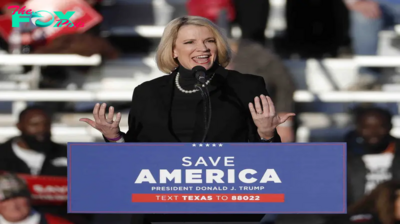US News
100,000 Families Receiving Childcare Subsidies Could Have Lower Costs. Here’s What to Know
The Biden Administration announced Thursday a new rule that would reduce childcare costs for more than 100,000 families.
The rule makes fixes to the Child Care and Development Fund, which serves an average of 1.3 million children every month, and will mainly help families that are already receiving childcare subsidies while also expanding access to aid for others.
The directive comes amid rising childcare costs nationwide. In September, $24 billion in pandemic-era childcare investments under the American Rescue Plan ended, which advocates warned would increase the financial burden on both providers and families. In New York City, 80% of families cannot afford care for a single child, according to a report by public policy think tank 5BORO Institute.
“We have an opportunity to make improvements for child care providers, who do the critical work of caring for our youngest learners and supporting working families,” said Ruth Friedman, Director of the Office of Child Care, in a press release. “When child care providers are financially Healthy, the whole community benefits.”
The new rule officially goes into effect on April 30, though states will have more time to fully implement the changes. Here's what to know.
Copay caps
The rule change is designed to help working-class families, some of whom are already receiving subsidies for childcare. The regulations will require states to charge a cap of 7% of a family’s income as a copay.
The federal standard for affordability says that childcare for one child should cost about 7% of a total household income, according to the U.S. Department of Health and Human Services. However, a 2024 Care survey found that families spend an average of 24% of their household income on childcare.
Many states have already capped copays, according to Anne Hedgepeth, chief of policy at Child Care Aware of America. However, this rule change encourages states to eliminate copays for families who have a child with a disability, children in foster care or who are experiencing homelessness, and those who are a part of Head Start and Early Head Start programs.
“Part of the reason for this is that even a small family contribution can be a barrier for a family to use a subsidy,” HedgePeth says. “Ensuring that we really target the resources we have for families so that when they are eligible for a subsidy that actually means they can use childcare, is really critical.”
Application accessibility
States will also be required to make applications for childcare subsidies more accessible, by making them available online and on a mobile device.
The Biden Administration is also attempting to streamline applications by using family eligibility for other social service programs as an indicator that a family qualifies for childcare aid. “If you're already eligible for SNAP, a state could decide that you're eligible for a childcare subsidy,” says Hedgepeth. (Every state has unique eligibility requirements that they dictate.)
Support for childcare providers
Childcare providers will also receive some support. Under the new regulations, states will be required to pay providers based on enrollment, not attendance, which helps keep more childcare centers open. When financial support is given based on enrollment, providers only receive aid for the days a child is present. Research from Center for American Progress found that this causes providers to incur greater costs.
States will also be required to pay childcare centers before they offer services to families.
When will the changes take effect?
Some states could have until 2026 to fully implement these changes. “We have some states where state legislatures will have to move policies forward, and not all legislatures meet this year,” HedgePeth says.
States will have to go through a planning process to outline how and by when they will comply with the rule change. “States will be using that state plan to identify that they've changed their policy, or that the regulation is pending and they have an administrative procedures requirement that will take this long, or that the legislature will have to move it forward,” HedgePeth says. States can apply for a two-year waiver if they have to go through substantive changes to adhere to new regulations.
Correction, March 1
The original version of this story misspelled the name of the chief of policy at Child Care Aware of America. Her name is Anne Hedgepeth, not Anne Hedgepath.
-

 US News1d ago
US News1d agoHow TIME and Statista Determined the Best Companies and Colleges for Future Leaders for 2025
-

 US News1d ago
US News1d agoWorld’s Best Brands – United States
-

 US News2d ago
US News2d agoFlorida Man Arrested and Charged With Planning to Bomb the New York Stock Exchange
-

 US News2d ago
US News2d agoU.S. Gathers Global Group to Tackle AI Safety Amid Growing National Security Concerns
-

 US News3d ago
US News3d agoTexas Offers Trump Land on U.S.-Mexico Border for Potential Mass Deportations
-

 US News3d ago
US News3d ago4B Is Not the Winning Strategy to Resist the Patriarchy People Think It Is
-

 US News3d ago
US News3d ago‘Bomb Cyclone’ Threatens Northern California and Pacific Northwest
-

 US News3d ago
US News3d agoClimate Action in Trump 2.0



















